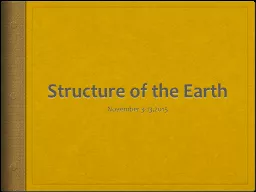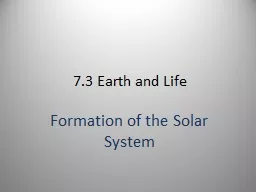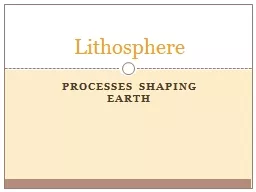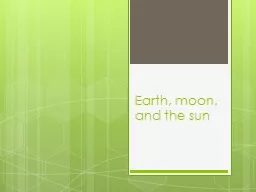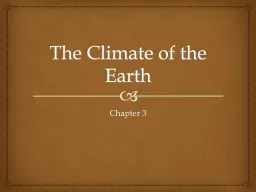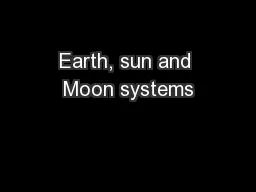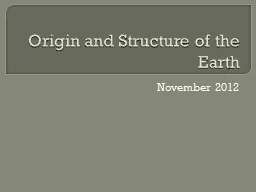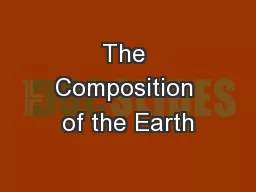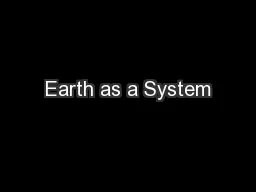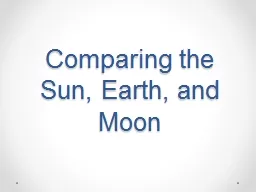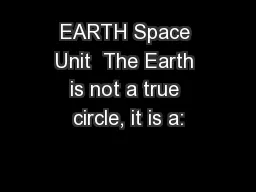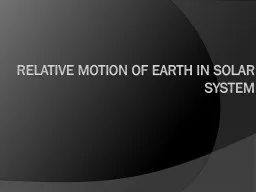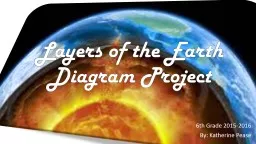PPT-Structure of the Earth
Author : marina-yarberry | Published Date : 2017-01-11
November 3132015 Objectives Students can KNOW the branches of Earth Science and the structure of the Earth UNDERSTAND that the different parts of the Earths structure
Presentation Embed Code
Download Presentation
Download Presentation The PPT/PDF document "Structure of the Earth" is the property of its rightful owner. Permission is granted to download and print the materials on this website for personal, non-commercial use only, and to display it on your personal computer provided you do not modify the materials and that you retain all copyright notices contained in the materials. By downloading content from our website, you accept the terms of this agreement.
Structure of the Earth: Transcript
November 3132015 Objectives Students can KNOW the branches of Earth Science and the structure of the Earth UNDERSTAND that the different parts of the Earths structure interact with one another. Phases are different views of the Moon’s sunlit half. The Lunar phases are the lit & unlit portions of the moon you see from Earth.. Light from the sun reflected by the Moon’s surface. The Moon’s position in its monthly orbit determines how it appears from Earth.. Formation of the Solar System. Formation of the Solar System. Scientists claim that 4.5 billion years ago there was just a featureless cloud of . gas..mostly. hydrogen and some helium with a little carbon and iron. Lithosphere. Earth’s Systems (spheres) . Lithosphere - . Earth’s crust and upper . mantle. Atmosphere - . Layers of gases surrounding . Earth . Key terms:. Solstice: day when the sun appears farthest North or South of the equator. Northern hemisphere receives the most sunlight of the year around June 21 on the summer solstice.. Phase: shape of the moon you see from Earth.. Chapter 3. Earth-Sun Relationship. Chapter 3 – Section 1. Weather . Weather. – the condition of the atmosphere in one place during a limited period of . time. Ex. : looking out the window to see if you need an umbrella means you’re checking the weather. The . Sun. Is HOT!!!. The sun is an . average . star . The heat and light are the result of . Nuclear Reactions . constantly taking place in the sun.. It is in the . center. of our solar system. . Comparison . November 2012. Breaking a complex problem into parts:. System. Closed Open. a system that does not allow matter to pass through its boundaries, but may allow energy to pass through its boundaries. The Earth is divided into three layers based on the compounds that makeup each layer. They are:. 1. Crust. 2. Mantle. 3. Core. The Crust. The Crust is the :. 1. outer most layer of the Earth.. 2. It is the thinnest layer.. What is Earth Science?. What are the Earth System’s four Spheres?. What are cycles and how do they work?. System. : A kind of model often used to describe the natural world.. Closed System. : ENERGY enters and may leave, but MATTER does not leave. The Sun. What physical features do you notice?. How does the Sun compare to the Earth and Moon?. What does the Sun provide for the Earth?. Physical Characteristics of the Sun. Sunspots. Solar Flare. Oblate Spheroid. Bulges in. the middle. Earth’s Shape. 1. Right distance from the Sun. 2. Right amount of water. 3. Right amount of atmosphere. Why Does Earth Have Life?. The . rotation. of the Earth lasts for . The Sun-Earth-Moon System. The relationships between the Sun, Moon, and Earth are important to us in many ways. . The Sun-Earth-Moon System. The Sun provides light and warmth, and it is the source of most of the energy that fuels our society. . 6th Grade 2015-2016. By: Katherine Pease. Objective: . Students will compare and contrast the different layers of the Earth to create a informative diagram.. TEK: 6.10 The student understands the structure of Earth, the rock cycle, and plate tectonics.. La gamme de thé MORPHEE vise toute générations recherchant le sommeil paisible tant désiré et non procuré par tout types de médicaments. Essentiellement composé de feuille de morphine, ce thé vous assurera d’un rétablissement digne d’un voyage sur .
Download Document
Here is the link to download the presentation.
"Structure of the Earth"The content belongs to its owner. You may download and print it for personal use, without modification, and keep all copyright notices. By downloading, you agree to these terms.
Related Documents

